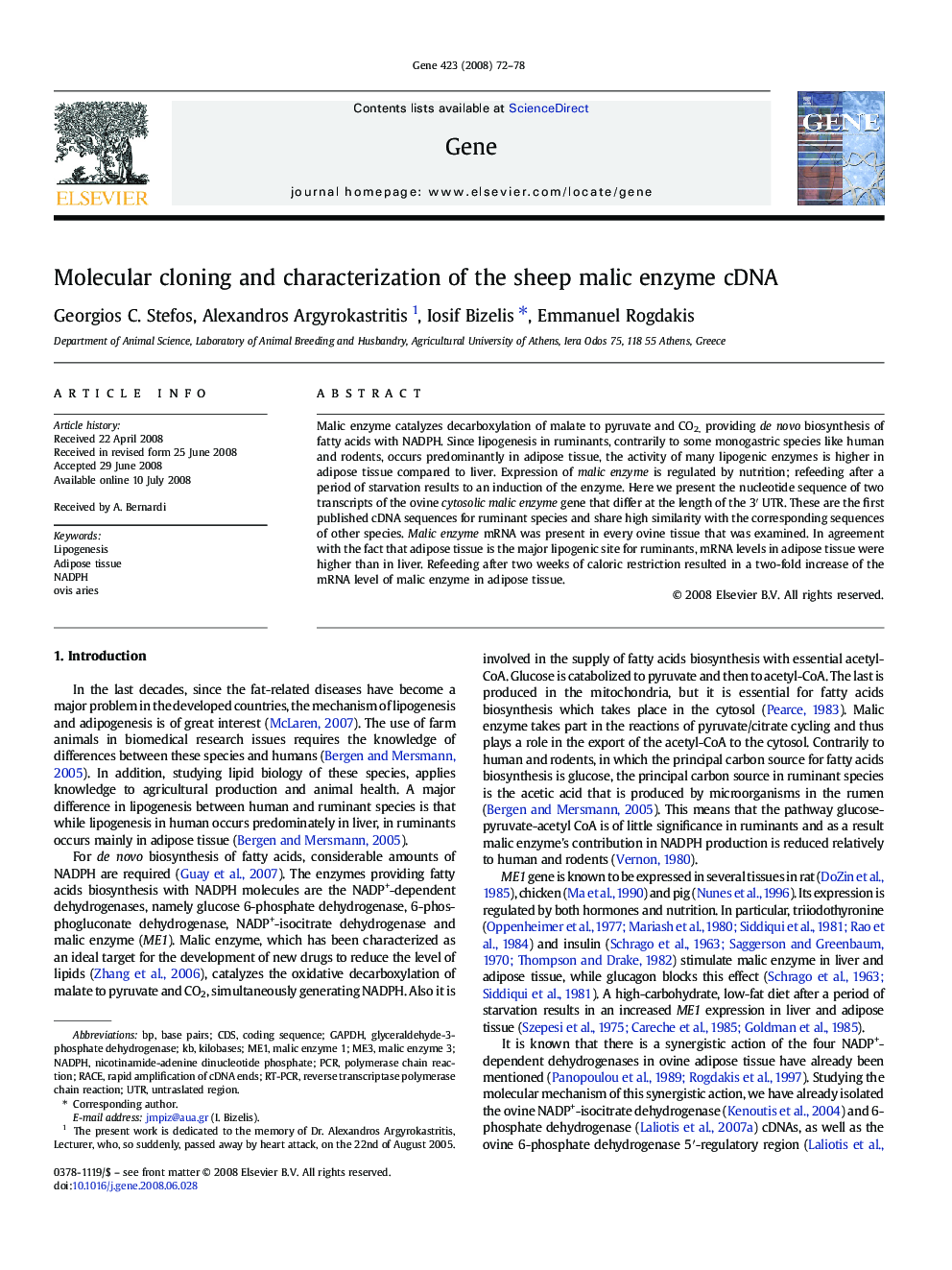| Article ID | Journal | Published Year | Pages | File Type |
|---|---|---|---|---|
| 2819187 | Gene | 2008 | 7 Pages |
Abstract
Malic enzyme catalyzes decarboxylation of malate to pyruvate and CO2, providing de novo biosynthesis of fatty acids with NADPH. Since lipogenesis in ruminants, contrarily to some monogastric species like human and rodents, occurs predominantly in adipose tissue, the activity of many lipogenic enzymes is higher in adipose tissue compared to liver. Expression of malic enzyme is regulated by nutrition; refeeding after a period of starvation results to an induction of the enzyme. Here we present the nucleotide sequence of two transcripts of the ovine cytosolic malic enzyme gene that differ at the length of the 3â² UTR. These are the first published cDNA sequences for ruminant species and share high similarity with the corresponding sequences of other species. Malic enzyme mRNA was present in every ovine tissue that was examined. In agreement with the fact that adipose tissue is the major lipogenic site for ruminants, mRNA levels in adipose tissue were higher than in liver. Refeeding after two weeks of caloric restriction resulted in a two-fold increase of the mRNA level of malic enzyme in adipose tissue.
Keywords
me3ME1Malic enzyme 1NADPHGAPDHRT-PCRAdipose tissuerapid amplification of cDNA endscoding sequencebase pairsLipogenesisRaceUTR یا untranslated regions nicotinamide-adenine dinucleotide phosphatereverse transcriptase polymerase chain reactionpolymerase chain reactionPCRCdSkilobasesOvis ariesglyceraldehyde-3-phosphate dehydrogenase
Related Topics
Life Sciences
Biochemistry, Genetics and Molecular Biology
Genetics
Authors
Georgios C. Stefos, Alexandros Argyrokastritis, Iosif Bizelis, Emmanuel Rogdakis,
